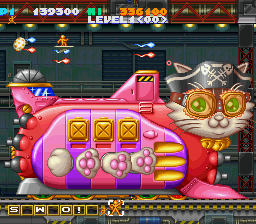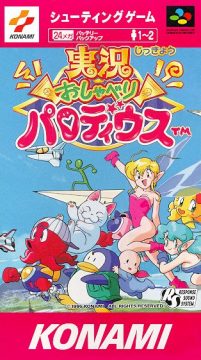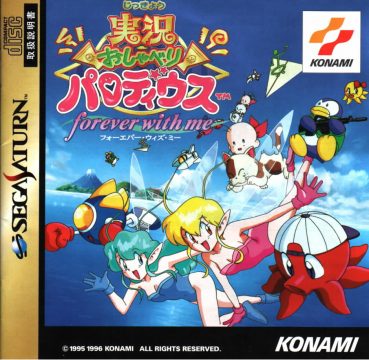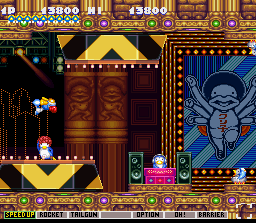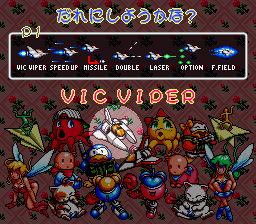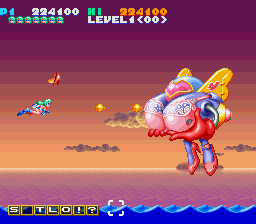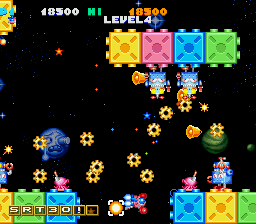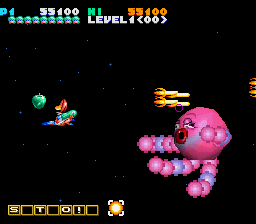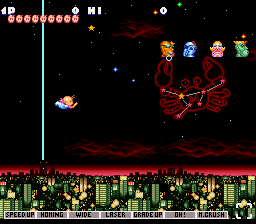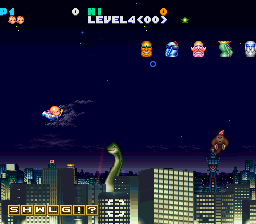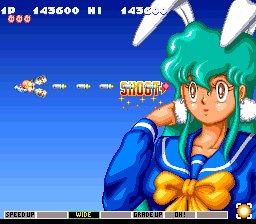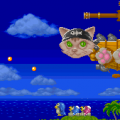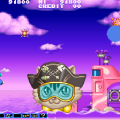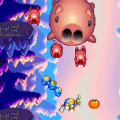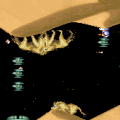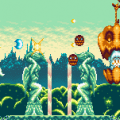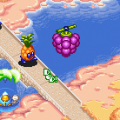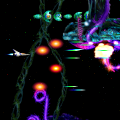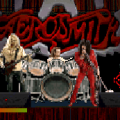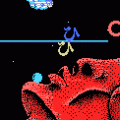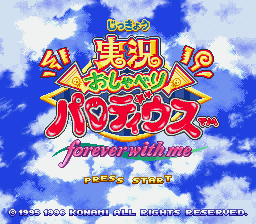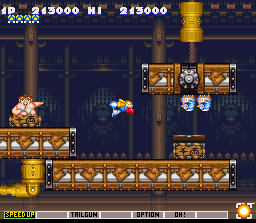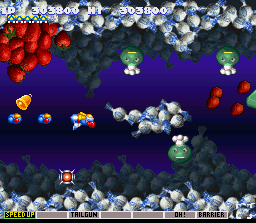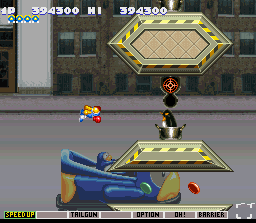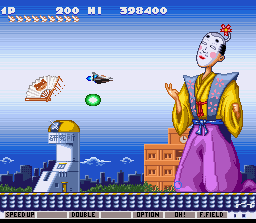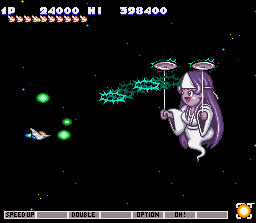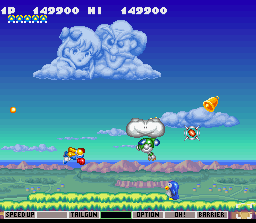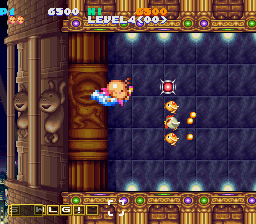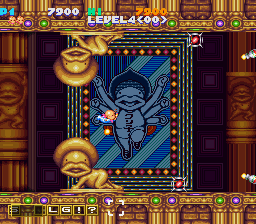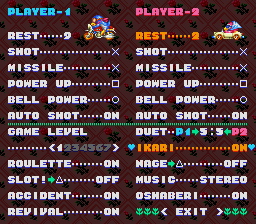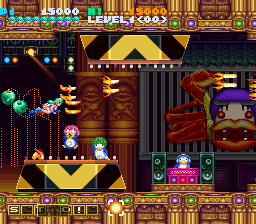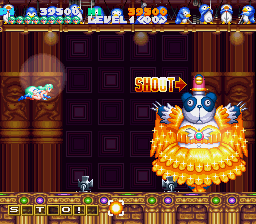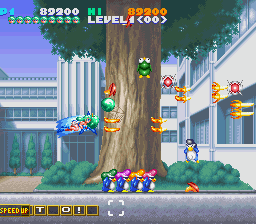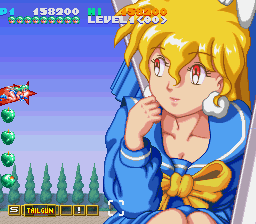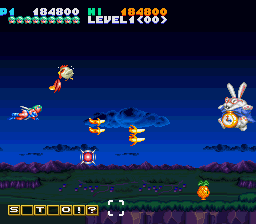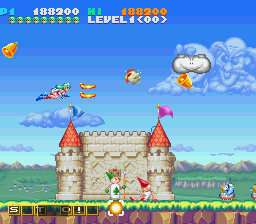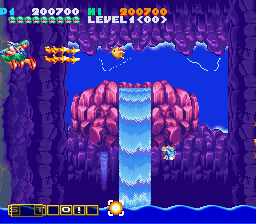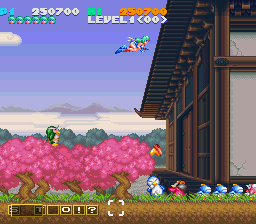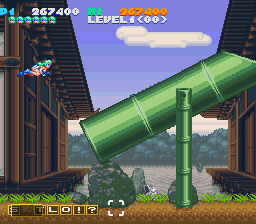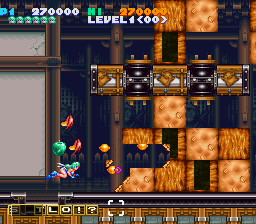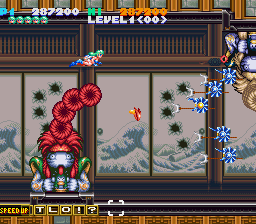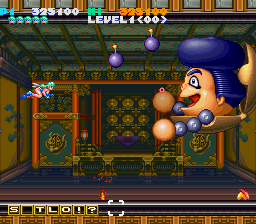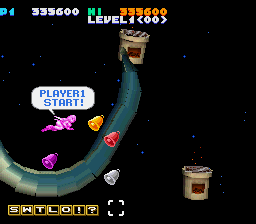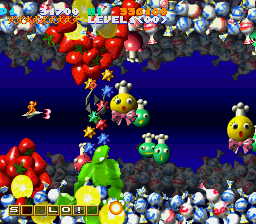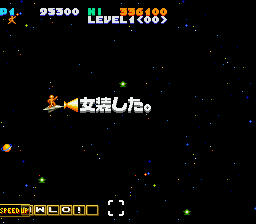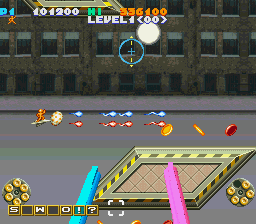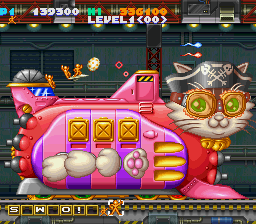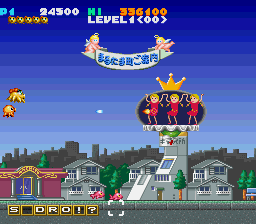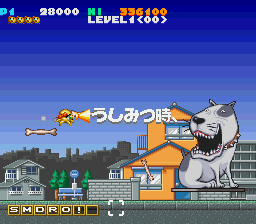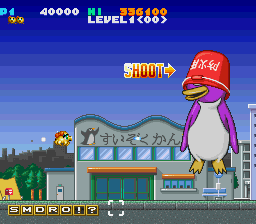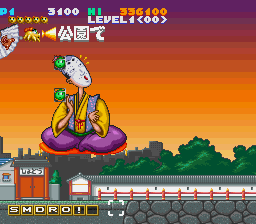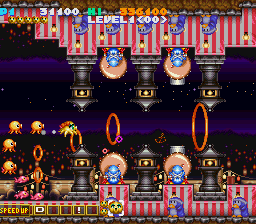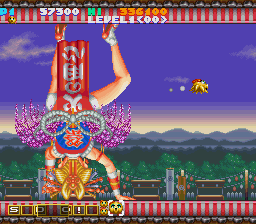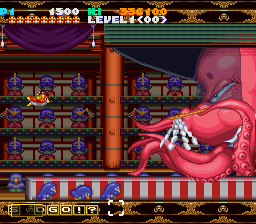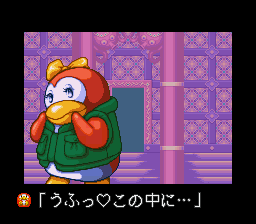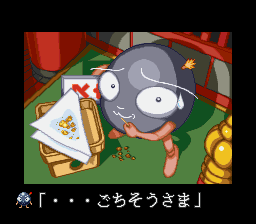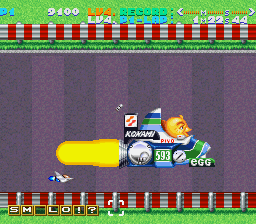- Parodius
- Parodius Da!
- Gokujou Parodius
- Jikkyou Oshaberi Parodius
- Sexy Parodius
The defining feature of Jikkyou Oshaberi Parodius (translated roughly as “Parodius Talk Show Live!”) is the running commentary provided by famed voice actor Jouji Yanami. The Super Famicom version, the first release of this title, contains a special chip that allows for voice samples from the old, funny-sounding Japanese guy. The commentary isn’t anything deep, about what you’d find in a sports title – stuff like “Watch out!”, “That wasn’t good”, or “What the heck?”, depending on the action. Every once in awhile, when you defeat a boss, you hear him say “Omae wa mou shindeiru” (“You are already dead”), the famous quote from Hokuto no Ken.
The previous Parodius games jabbed lightly at shooters, but Jikkyou Oshaberi Parodius pokes fun at other Konami games. While you start off in a disco, you later fly through levels based on the high school hallways (and bathrooms) of the dating sim Tokimeki Memorial, featuring Moai heads dressed with hairstyles from the girls in that game; the skies over Donburi Island from TwinBee, where you fight an extra busty female TwinBee; a computer rendered, food-based level inspired by Xexex; the castles of feudal Japan from Ganbare Goemon; and the shooting gallery ranges of Lethal Enforcers. Each stage comes complete with remixed music from each game.
While the arcade Gokujou Parodius offered sixteen playable characters, half of them were simply duplicates for use by the second player. This time, all of the characters are unique, even if some of the differences between them are small. Michael/Gabriel, Mambo/Sambo and Hikaru/Akane are missing in action (though the bunny girls show up as bosses), but new additions include fruit fairies Memim and Sue, and cute kitty cats Mike and Ran. Upa and Rupa also make an appearance. There are also several hidden fairies throughout the game. Collect them and you’ll unlock various cheats.
Since Jikkyou Oshaberi Parodius was released right as the 16-bit era was fading in the wake of 32-bit games, Konami ported the game to the PlayStation and Saturn in the year after its Super Famicom release. For the most part, not a lot was changed. The graphics are improved, but only slightly. Most of the additions are extra details, like the Galaxy Express 999 train and the human flies climbing the walls in the opening stage intro. The Colonel Sanders chicken juggler in the first stage has also changed from a Santa Claus costume to a bunny rabbit outfit.
The sound quality is improved, at least. The music has been entirely rearranged. The voice samples of the announcer are clearer, and there’s a second, female announcer for two-player mode. The SFC version only offered two-player alternating play, but the 32-bit versions have simultaneous play. There’s also less slowdown.
There are some tweaks and changes throughout the levels, too. There are now blue and pink Justifier light guns shooting at you in the Lethal Enforces stage (complete with “Reload!” sound effects), the battle against the Goemon head features Ebisumaru, the mid-boss in the Twinbee level is different, and the famous cat vehicle returns, this time as a train. The boss rush has also changed. In the SFC version, you fight a character from Taisen Puzzle Dama, an old Gradius boss, an evil TwinBee piloting a larger TwinBee robot, and the spirit goddess Horo from the first Ganbare Goemon SNES game. In the Saturn version, all of the bosses are based off of Puzzle Dama characters.
There are also two new omake modes. One is an additional level made of Lego blocks (like the Omake/Lollipop levels from Parodius Da!). The other takes place on a race track, where you try to get as many speed-ups as you can while still managing not to crash, and destroying bosses as quickly as you possible.
The PlayStation version also has an additional “Accident” mode, where you’ll randomly be brought to stages made completely of polygonal enemies, like the eggplant shooting volcano and Moai ships. Since the Saturn probably couldn’t handle this, it has an “Extra” mode which alters the enemy formations. Both versions have even more fairies to find, as well as new characters to unlock when you find them all – Kid Dracula and Dracula-kun.
The PlayStation port runs at the same resolution (256×240) as the SFC version. Since the Saturn cannot handle this, it runs at 320×240. During gameplay, the screen view is expanded on both sides. However, the menus were not redrawn, and look distorted.
The PSP version is based on the PlayStation release, with some extra difficulty adjustment options. Some music tracks have changed. The original first level theme was “That’s The Way I Like It!” by KC and the Sunshine Band, but is now a remix of the Dance Dance Revolution song “Brilliant 2 U”. The race track theme was originally based on T-Square’s “TRUTH”, the theme music to the Fuji Television’s Formula One coverage.
